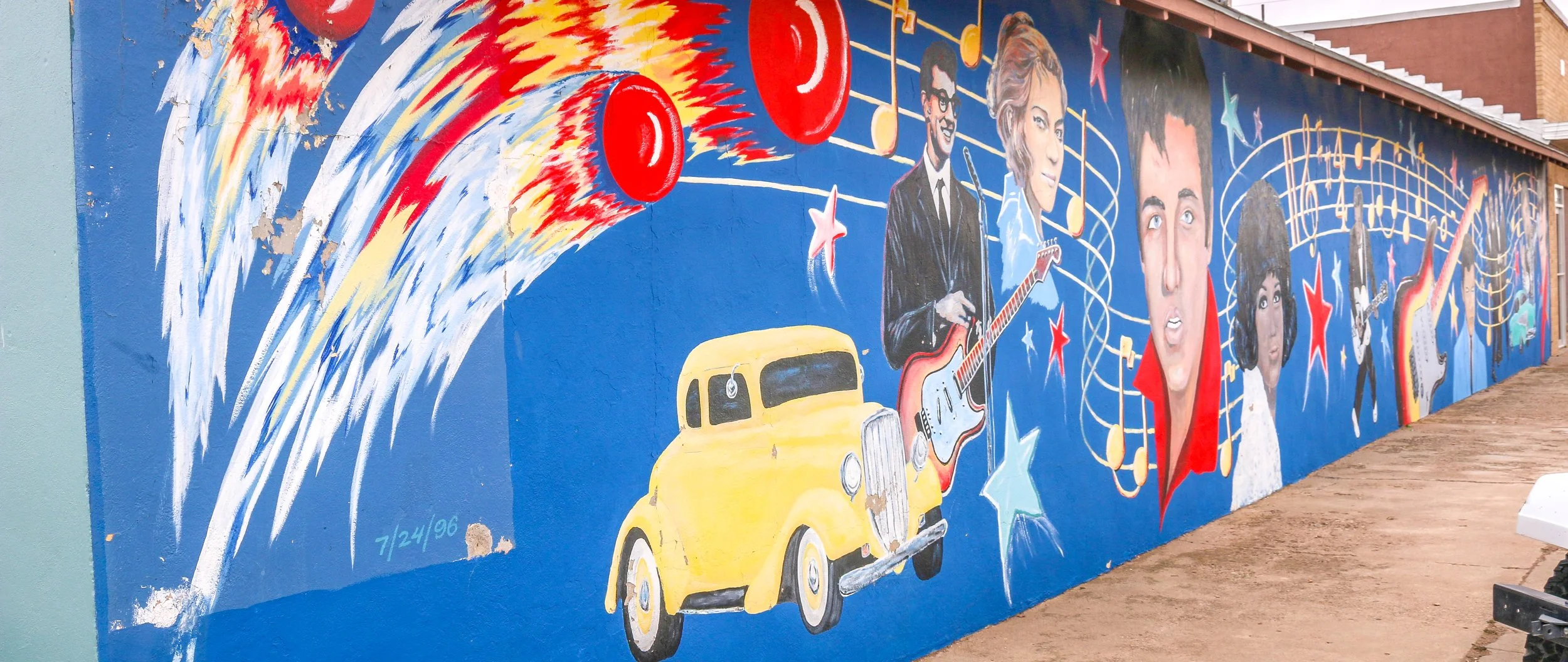Hello Everyone! It has been an amazing week here in New Mexico as I’ve been out hiking, exploring state and national parks, visiting small towns and soaking in some wonderful hot springs. The wind has been blowing tumbleweed across my path and the roadrunners make me smile. I even popped over to Mexico for a couple of beers this week. I’ve been feeling great and riding on a real high since arriving in New Mexico, and I’m hoping to keep cruising happily along for as long as I can. When I started this journey four years ago, I really wanted to take a deep dive into the Deep South and Appalachia and learn more about the history, culture, music and food of those regions. I had a fascinating time doing just that, but I also wanted to get west and visit old cowboy towns and hike through the desert. I didn’t know it was going to take quite so long to get here, but I’m sure glad I have finally made it. It’s so quiet out here and I’ve been so happy to get on the trail and explore a region so different from the places I’ve been for the last few years. I’ve spent some time out here on tour, but very little in New Mexico and mostly just cruising through. It’s been really great to be here and it’s been a fascinating week.
I know the world is struggling right now, and being partly of Ukrainian descent, I’m very aware of and unhappy with what Putin is doing in Eastern Europe. I don’t think there is much I can do about it, though, so I’m going to keep pushing onward and upward. The price of gas has skyrocketed in the last couple of weeks as a result of this invasion. I paid $2.98 a gallon just a couple of weeks ago in East Texas and today it was $4.49. I have travelled enough to know that that is still cheaper than in much of the world before all of this started, but when I have to fill up my tank every couple of days it hits hard. It means I have to plan things out more to avoid backtracking and make other adjustments accordingly, but I'm not going to let it stop me. It is actually an incredibly small price to pay to support the Ukrainian cause and while I wouldn’t say I’m happy to do it, I’m willing to do it. I’m very grateful to have work lined up for this summer though.
When I left you last week, I had just arrived in Las Cruces. After I finished writing this post, I decided to head down to Old Mesilla and have a look around and maybe grab some dinner. Mesilla is a town just south of Las Cruces which was created after the Treaty of Guadalupe Hidalgo (which ceded New Mexico to the United States) as a town for those who wished to remain in Mexico. The border was later moved south and Mesilla officially became an American town. It’s a really cute little place, centered on an old central plaza with plenty of adobe buildings surrounding it. I loved that they had ristras of red chiles hanging from their light posts which brought a big smile to my face. I wandered around for a while and then took a seat in the plaza to listen to the Ash Wednesday sermon coming from the speakers attached to the central Basilica of San Albino, built in 1906. It was a quiet and pleasant sermon and I enjoyed listening to it in the quiet plaza as the sun was going down. When the sermon was over and the sun had set, I dropped into the Double Eagle for a margarita. The Double Eagle is apparently one of the fancier places in the area, and one that families tend to visit on special occasions. The bar area was absolutely stunning and the bar itself was constructed from the old high school basketball floorboards. They made a good margarita and there was a perfect single seat in the corner made just for me. When I finished my margarita, I made my way just down the block to La Posta de Mesilla, the other legendary venue in Mesilla and a restaurant recommended by more than one friend. I loved the piranhas and parrots in the waiting area and soon got a seat at the back bar. I had a hankering for a prickly pear margarita and was thrilled they could accommodate this request. The couple next to me were retired Border Patrol, and they were really wonderful to talk with. On my other side was a gentleman who grew up in L.A. but had moved to Phoenix many years ago. Both were such easy and gentle conversations, maintaining my first impression of the people of the region. My second drink was a chile margarita which definitely had a little spice and kick to it. The drinks and people were great but sadly the food wasn’t very good at all. It was quite ordinary actually and quite disappointing for such a large and historic spot. I had a great time in Old Mesilla despite my tasteless burrito, and decided to call it a very early night.
I was up and at ‘em early on Thursday, though, and on my way out to the Baylor Pass Trail in Organ Mountains - Desert Peaks National Monument. This is a beautiful natural area just north and east of Las Cruces, and I was happy to get out there while the sun was still behind the clouds. The hike up to the pass was steady and moderate, but gained a good bit of elevation over the 3.5 miles to its crest. It took me through prickly pear and yucca and even some sagebrush on my climb…













